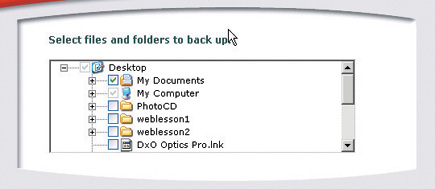Backing Up Is Easy To Do
Maxtor’s OneTouch II Drive
I just got a call from a digital photographer we all know and who is one of the pioneers and chief practitioners of the craft. He related the awful tale that we hear all too often these days--that his computer crashed and all the data on his hard drive was gone. Luckily, he had been backing up all along, on CDs and a separate hard drive.
 |
|
|
If there's one thing we've all learned from our computer experience
it's to back up our files whenever possible. You never know when the malignant
forces will strike, although you can usually count on their arrival when you're
on deadline or you just finished a major project. We all know to save as we
work on a word document as often as possible; image makers know that in the
long run that making copies, first on CD or DVD and on a hard drive separate
from the mother ship is the best bet.
While you can work with a separate hard drive and drag-and-drop files and folders
as you go, too often the task seems repetitive and many of us forget to back
up as a regular part of our work. That's when it usually gets you, just
as the power might flicker right at the end of finishing the latest chapter
on your Great American Novel. The key, it seems, to successful backup is to
have the process work without thought and to have a system that automatically
backs up files as you go.
That's what Maxtor has in mind with their new Maxtor OneTouch II. Once
you install the drive and connect it the default is auto-backup each day, if
desired. It handles everything on local drives including e-mails, address books,
Internet favorites, My Documents folders, operating systems, and applications.
The setup offers historical backup copies as well, so that you can restore your
system to how it was configured the day before, two days before, or even two
weeks back.
 |
|
|
Restoration is simple: the three-step process involves clicking on the desired
point in time, selecting files or folders to restore, and then choosing a destination
for the restoration. Guiding all this is a Wizard-type setup, which shows storage
and backup in one space. What Maxtor calls a "Restore Point" is
a specific snapshot of all your files and folders based on a specific point
in time. Whenever you back up (which can be done automatically at night, by
the way, on specific days of the week if desired) their Retrospect Express HD
setup adds a new restore point to your backup drive. This allows you to restore
individual files or folders or, heaven forbid, the entire drive. In short, once
you set it up you're backed up, without giving it another thought.
The Maxtor OneTouch II drive and software can be used with both Windows and
Mac. There are two capacities available, both with USB 2.0 or FireWire hookups.
The 300GB drive has an MSRP of $379.95 and the 250GB drive has an MSRP of $329.95,
both of which include their Dantz Retrospect Express HD software.
For more information, visit www.
maxstore.com.
- Log in or register to post comments

































